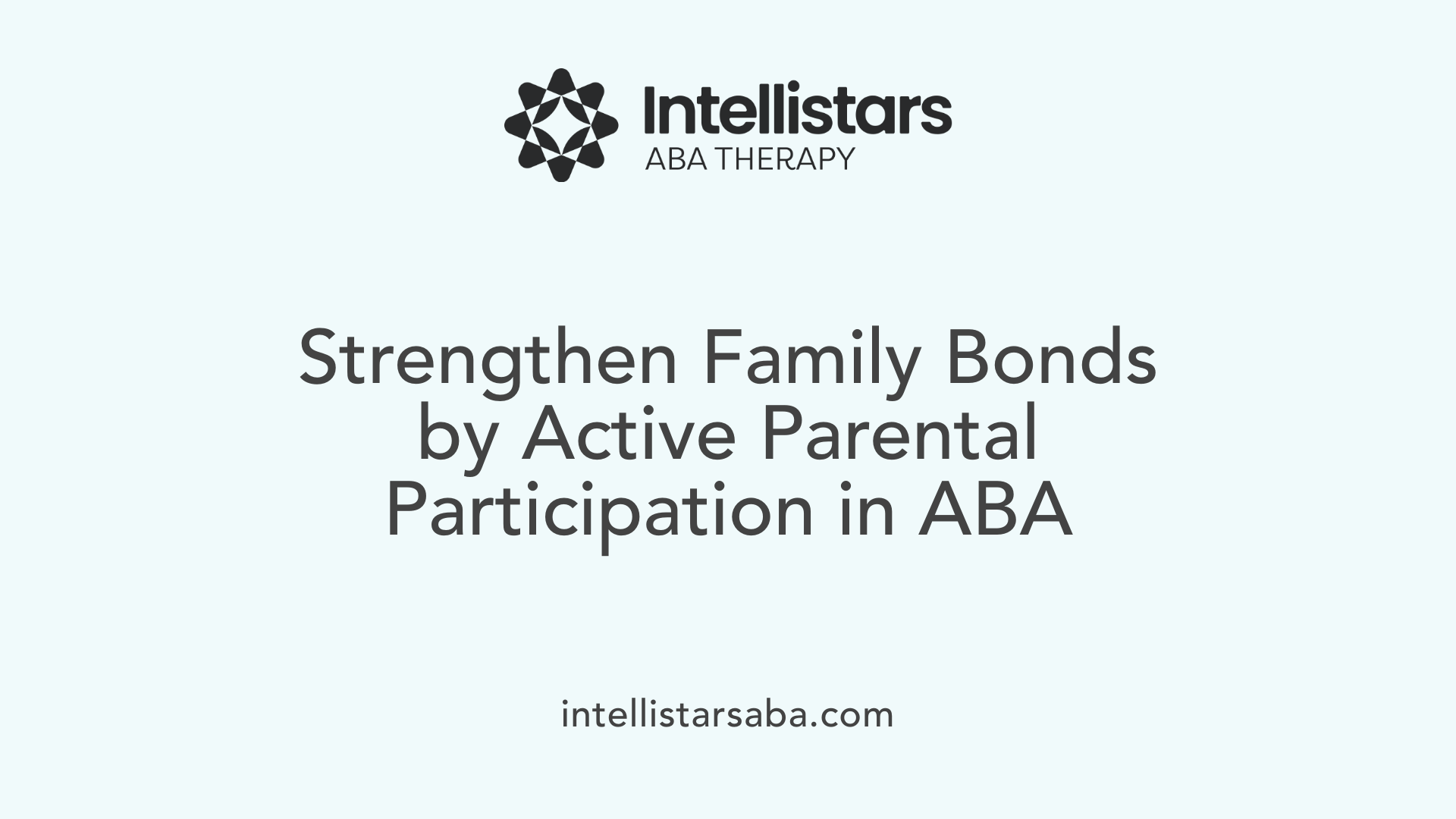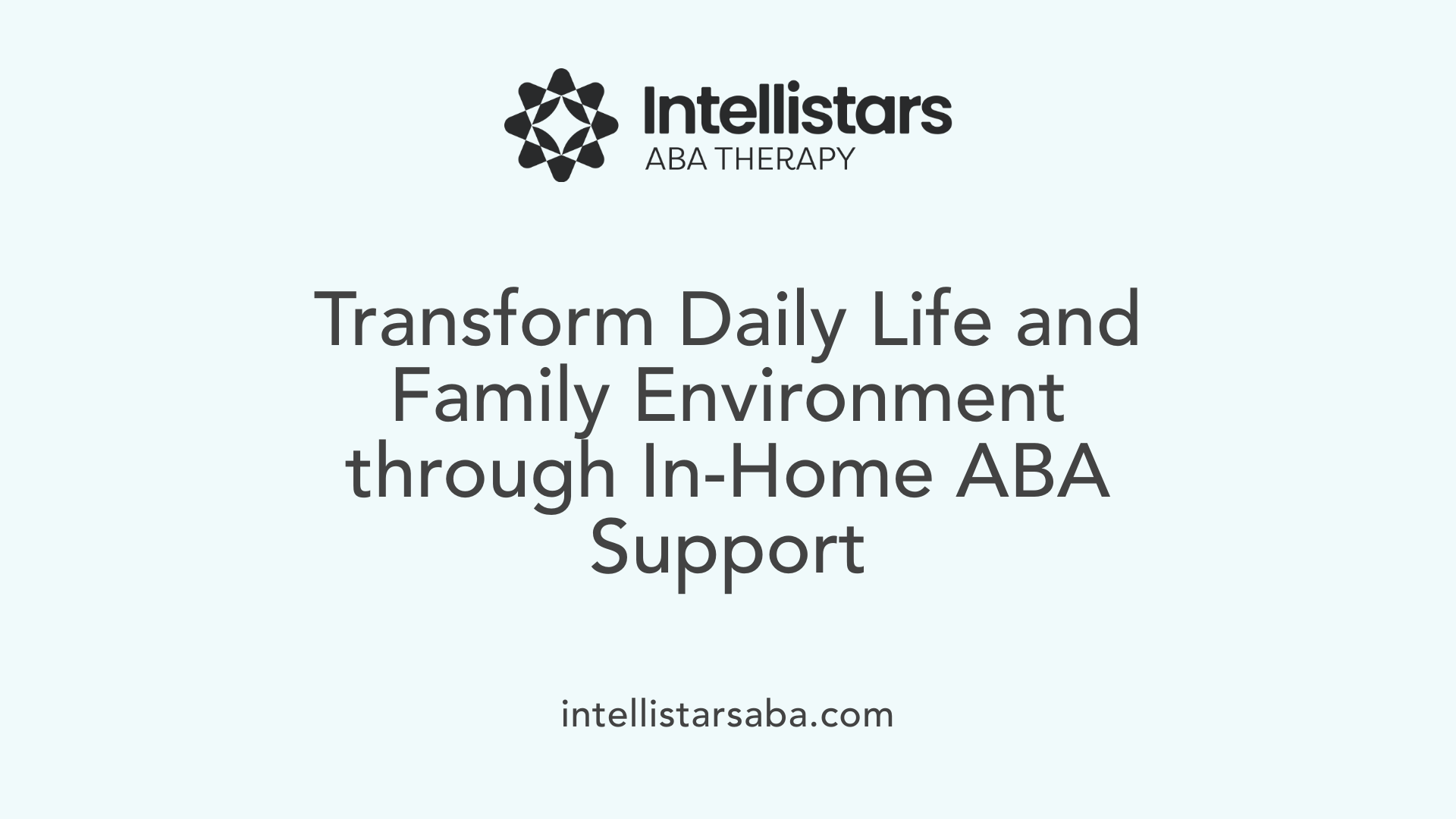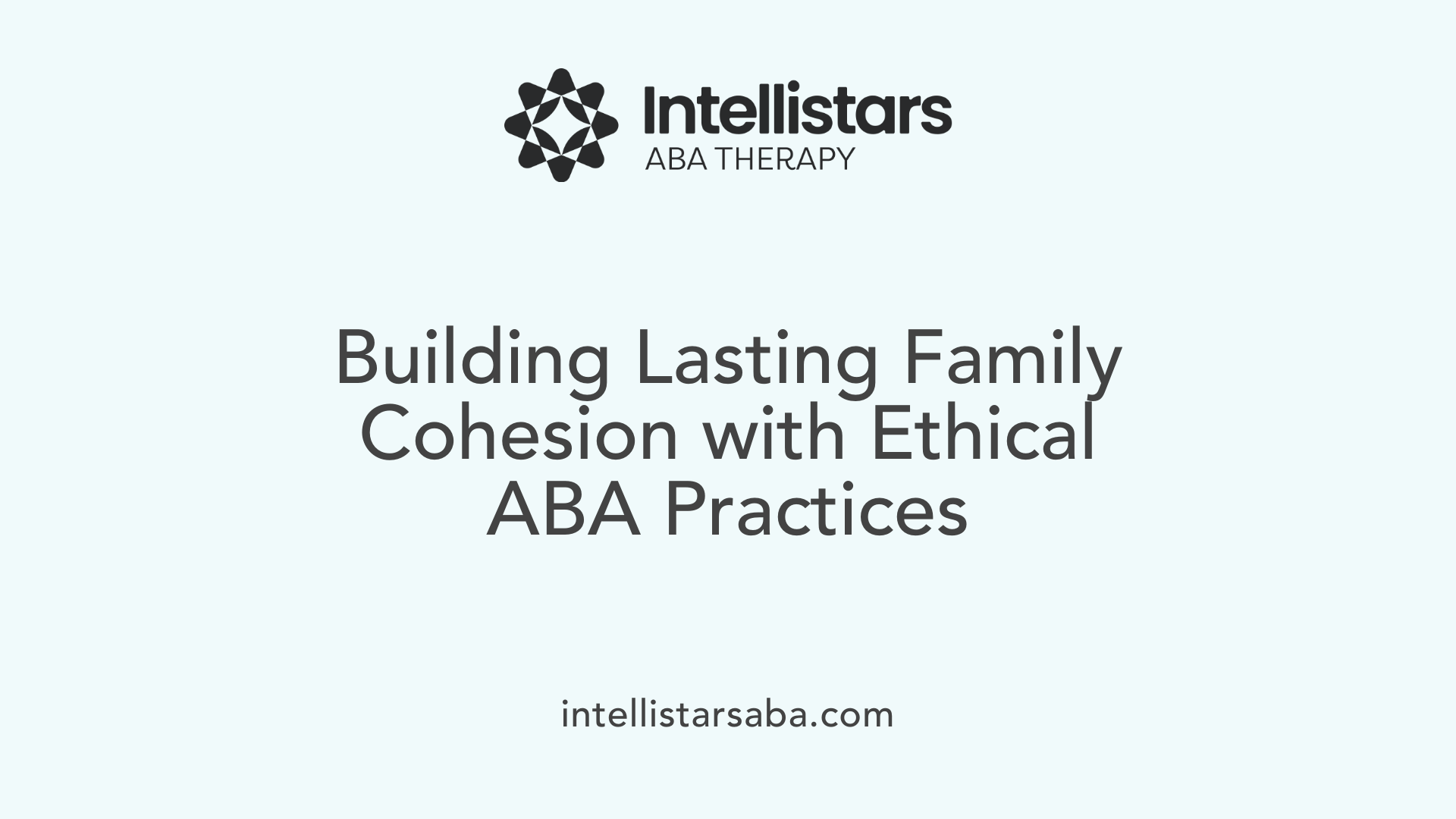Unlocking the Power of Family-Centered Autism Support
Home-based Applied Behavior Analysis (ABA) therapy is revolutionizing how families support children with autism spectrum disorder (ASD). By integrating therapy into daily routines within a familiar environment, it fosters stronger family bonds, enhances communication, and creates a cohesive support system tailored to each child's unique needs. This article explores how ABA therapy, when conducted at home, unlocks the potential for profound positive changes in family dynamics, promoting sustained development and improved quality of life for all members.
The Core Principles and Personalization of ABA Therapy
How does ABA therapy utilize techniques such as positive reinforcement, prompting, shaping, and modeling?
Applied Behavior Analysis (ABA) employs a variety of proven techniques to promote meaningful behavioral change. Positive reinforcement is fundamental, involving rewarding desired behaviors to increase their occurrence. For example, giving praise or tokens when a child communicates appropriately encourages ongoing communication efforts.
Prompting involves providing cues or assistance to help the individual perform a specific behavior, gradually fading over time to promote independence. Shaping is a process of reinforcing successive approximations toward a target behavior, enabling children to acquire complex skills step-by-step. Modeling includes demonstrating behaviors for children to imitate, which facilitates learning through observation.
These techniques are often combined within sessions to effectively teach new skills and reduce problematic behaviors, promoting sustained progress in daily life activities.
The Advantages of In-Home ABA Therapy for Family Support
What are the advantages of in-home ABA therapy for family support and communication?
In-home ABA therapy plays a vital role in strengthening family support and improving communication among family members. One of its primary benefits is the familiar environment it provides, which helps children feel more comfortable and less stressed during sessions. This comfort level encourages greater participation and engagement, making learning more effective.
Parents and caregivers often participate actively in therapy sessions, which enables them to learn and practice ABA strategies in real-time. This hands-on involvement enhances their ability to support their child's development consistently outside of therapy hours. As a result, families become more empowered, and their communication improves as they better understand their child's needs and progress.
Moreover, involving family members fosters a collaborative atmosphere. It promotes open dialogue between parents and therapists, ensuring strategies are aligned and tailored to the child's daily routines. This cooperation helps create a supportive and unified approach to behavioral management.
Personalized treatment plans are another advantage of in-home ABA therapy. These plans are designed to fit seamlessly into family routines and daily activities, making them practical and easy to implement. When interventions are directly applicable to everyday situations, children can generalize skills more effectively.
Family involvement during therapy sessions also encourages positive social interactions within the home environment. It increases the frequency of reinforcing desired behaviors and aids in skill generalization across settings, including school and community.
Overall, in-home ABA therapy enhances communication, promotes active family participation, and fosters a nurturing environment. These factors collectively lead to more enduring developmental gains and a stronger family bond.
How does in-home ABA therapy promote personalized treatment?
In-home services allow therapists to tailor interventions to the specific needs and routines of each family. This customization means therapy sessions can focus on the most relevant skills and challenges faced by the child. Additionally, therapists can observe the child's behavior within their natural environment, providing insights that help refine strategies.
What role does familiar surroundings play in reducing stress for children?
Children often experience anxiety or discomfort in unfamiliar or clinical settings. Conducting therapy in the home mitigates this issue by providing a safe and familiar space. Reduced stress levels can lead to increased focus, better participation, and more effective learning during sessions.
Benefits Summary
| Advantage | Description | Additional Details |
|---|---|---|
| Increased accessibility and convenience | Therapy sessions are brought directly to the home, saving travel time and costs. | Flexible scheduling suits family routines. |
| Personalized treatment plans | Custom programs tailored to the child's environment and family goals. | Enhances relevance and practicality of interventions. |
| Reduced stress and anxiety | Familiar surroundings ease children’s anxiety and promote engagement. | Contributes to more effective skill acquisition. |
In-home ABA therapy thus offers a comprehensive approach that benefits not only the child's development but also strengthens family bonds. With ongoing support and active participation, families can achieve sustainable progress and improved quality of life.
Enhancing Family Engagement and Cohesion through Parental Involvement

What are the benefits of involving family members in ABA therapy?
Involving family members in ABA therapy offers numerous advantages that can greatly enhance a child's development and the overall impact of treatment. When parents and caregivers actively participate, they help ensure that behavioral strategies are consistent across various settings, whether at home, school, or in the community. This consistency is essential for skill generalization, meaning the child can apply learned behaviors in different environments.
Family involvement also fosters stronger bonds within the family. It encourages open communication, reduces misunderstandings, and promotes a supportive atmosphere where positive behaviors are reinforced naturally through daily interactions. When family members are trained in ABA techniques, they gain confidence and become more competent in supporting the child's growth.
Moreover, engaging the entire family can increase the sustainability of therapeutic gains. Parental and sibling participation helps maintain progress outside of therapy sessions and reduces the risk of regression. It also encourages shared goals, creating a unified approach to addressing challenges and celebrating successes.
Overall, family involvement ensures that ABA interventions are more effective, personalized, and enduring. It transforms therapy into a collaborative process, where everyone plays a role in fostering the child's independence, social skills, and emotional well-being.
Supporting Positive Interactions through ABA Techniques

What strategies and techniques are used in home-based ABA therapy to support positive family interactions?
Home-based ABA therapy leverages a variety of tailored strategies designed to foster healthy family dynamics while promoting the child's developmental progress.
One foundational technique involves the use of positive reinforcement, where desired behaviors are rewarded with praise or preferred items to encourage repetition. Modeling and prompting guide children in acquiring new skills, while fading prompts over time ensures independence.
Visual schedules and structured routines are fundamental tools. These visual aids help children understand daily expectations, reduce anxiety, and foster predictability. They also serve as cues for engaging in specific activities, making transitions smoother.
Establishing a dedicated, distraction-free activity space within the home creates an environment conducive to learning. This minimizes interruptions and helps the child associate the space with positive, focused engagement.
Assessment within the child's natural environment allows therapists to customize interventions tailored to the family's unique routines and needs. This personalization promotes active family involvement, where caregivers reinforce skills consistently across routines.
Parents and family members are integral to this approach. Therapists collaborate closely with them, providing training and guidance to implement strategies confidently. This shared effort strengthens communication and enhances the child's social and emotional development.
Incorporating natural activities—like cooking, cleaning, or play—into therapy helps children generalize learned behaviors beyond clinical settings. These everyday interactions become opportunities for reinforcement and skill mastery.
Overall, combining personalized techniques, environmental adjustments, and active family partnership creates a supportive atmosphere that nurtures positive interactions, promotes social skills, and enhances the child's independence and family bonds.
Strategies and Techniques to Foster Family Bonding and Understanding
Activities that promote family bonding include joint therapy tasks, family meetings, and celebrating milestones together. These activities reinforce progress and help build a shared sense of achievement.
Encouraging open communication about behaviors, progress, and concerns fosters trust and teamwork among family members. This openness ensures that everyone is aligned in supporting the child's growth.
Celebrating small successes as a family enhances motivation and creates joyful experiences, further strengthening relationships.
Creating routines that involve multiple family members promotes consistency and teaches cooperation. Siblings' involvement fosters empathy, teamwork, and supportive roles.
In essence, integrating ABA techniques into daily family life not only accelerates skill development but also cultivates a nurturing environment where bonds are strengthened through shared understanding and participation.
The Role of Family Dynamics and Communication in Therapy Success

How can home-based ABA therapy improve family dynamics and relationships?
Home-based ABA therapy plays a vital role in strengthening family relationships by involving family members actively in the child's developmental process. When parents and caregivers participate in therapy sessions, they gain a deeper understanding of the child's needs and learn effective strategies to support skill development.
This active involvement fosters improved communication and teamwork within the family. Families learn to share goals, provide consistent reinforcement, and create a unified approach to behavioral challenges. As parents implement ABA techniques, they build confidence and develop stronger bonds with their children.
Moreover, celebrating small successes and milestones together enhances emotional connections. These shared achievements promote positivity and patience, reducing stress and misunderstandings that often accompany behavioral difficulties.
In summary, ABA therapy conducted at home not only advances the child's skills but also creates a more harmonious and understanding family environment. This nurturing setting is fundamental in ensuring sustained progress and fostering long-term familial bonds.
The Impact on Daily Life and Family Environment

What is the impact of home-based ABA therapy on the overall family environment and daily life?
Home-based ABA therapy significantly reshapes the family landscape by actively involving parents and caregivers in the child's developmental journey. This shared participation fosters a sense of teamwork and mutual understanding, which can strengthen familial bonds.
One of the most noticeable effects of conducting therapy at home is the reduction in anxiety for children. Being in a familiar environment helps children feel more comfortable and engaged, making learning more effective. It also allows therapy to seamlessly integrate into daily routines, turning everyday activities into opportunities for skill development.
Parents working alongside therapists learn to reinforce positive behaviors constantly, which accelerates learning and solidifies new skills across different settings. This consistent reinforcement helps in generalizing behaviors beyond therapy sessions, ensuring real-world application.
Clear and open communication between families and therapists improves goal alignment and ensures that interventions are personalized to the child's evolving needs. Such collaboration results in targeted strategies that are more likely to succeed.
Family involvement through training sessions and active participation in intervention implementation empowers caregivers, boosting their confidence. As parents see tangible progress, their emotional well-being improves, reducing stress and creating a more positive household environment.
Furthermore, integrating therapy routines into daily life promotes better time management and household organization, encouraging shared responsibilities. Siblings and other family members also become involved, fostering empathy and teamwork.
The overall effect of home-based ABA therapy is a nurturing, supportive atmosphere where children thrive and families grow stronger. It not only enhances the child's development but also cultivates a harmonious home life conducive to long-term success.
Long-Term Benefits and Ethical Considerations of ABA

What are the long-term effects of ABA therapy on family relationships and family cohesion?
ABA therapy often aims to improve not just individual skills but also enhance family dynamics over time. When families actively participate in therapy, they tend to experience stronger communication, greater empathy, and a collective focus on the child's growth. This collaborative environment can deepen family bonds and create a supportive atmosphere that benefits everyone.
Active family involvement—such as participating in therapy sessions, reinforcing strategies at home, and celebrating milestones—encourages better understanding among family members. As a result, many families find that their relationships become more harmonious, with improved teamwork around the child's needs.
However, it is important to note that the evidence for sustained long-term benefits varies. Some research indicates that when ABA is applied intensively or over extended periods, positive effects on family cohesion and independence are more likely to be maintained. Conversely, other studies point to limited long-term impact, especially if ongoing support diminishes or if interventions are not personalized.
Additionally, concerns have been raised regarding the ethical aspects of ABA, especially in cases where nonverbal children or those with severe needs might experience undue stress or loss of autonomy. The evolving field emphasizes the importance of tailoring interventions to respect the child's rights and individuality.
Emerging technological tools, such as virtual coaching and personalized data tracking, are helping families stay engaged and supported beyond initial therapy phases. These advancements aim to foster continuous growth and cohesion.
In summary, when implemented with a focus on ethical practices and family-centered approaches, ABA can positively influence long-term family relationships. Nonetheless, ongoing research and ethical vigilance are essential to ensure that therapy remains beneficial and respectful of each child's unique needs.
Nurturing Strong Families Through Consistent, Collaborative Therapy
Home-based ABA therapy not only promotes skill development in children with autism but also acts as a catalyst for healthier family dynamics by fostering communication, teamwork, and shared success. By involving family members actively and tailoring interventions to fit everyday life, ABA creates a supportive environment that benefits children and strengthens bonds among all family members. As research continues to evolve, the focus on ethical, personalized, and family-centered approaches promises to sustain these positive impacts well into the future, making ABA an invaluable tool for nurturing resilient, connected families.
References
- Explaining Home-Based ABA Therapy's Effectiveness
- The Complete Guide to ABA In-Home Therapy: Benefits, Process ...
- 7 Key Benefits of At Home ABA Therapy You Should Know - Rori Care
- Home-Based ABA Therapy for Families: Tips for Success
- The Benefits of In-Home ABA Therapy for Children with Autism
- Impact of ABA Therapy: The Key Role of Parental Involvement
- ABA Therapy and Its Impact on Family Dynamics
- Home-Based ABA Therapy Scheduling Strategies
- Why Home-based ABA Therapy Is A Gamechanger






